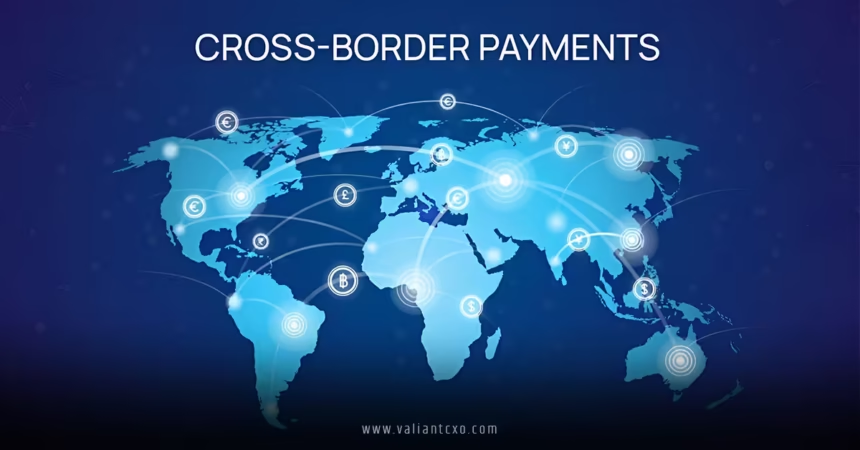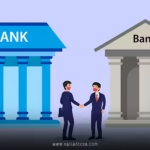Cross-Border Payments: How U.S. Banks Are Adapting is a topic that’s buzzing in the financial world, and for good reason. Sending money across borders used to feel like mailing a letter via carrier pigeon—slow, uncertain, and sometimes costly. But the global economy is changing, and U.S. banks are stepping up to the plate, embracing new technologies, partnerships, and strategies to make cross-border payments faster, cheaper, and more transparent. Whether you’re a small business owner paying overseas suppliers or an individual sending money to family abroad, understanding how U.S. banks are adapting to this dynamic landscape can save you time, money, and a whole lot of stress. Let’s dive into the nitty-gritty of how U.S. banks are navigating this global financial maze.
Why Cross-Border Payments Matter
Imagine you’re a small business owner in Texas trying to pay a supplier in Japan. You initiate a wire transfer, but days later, the funds are still floating in some financial limbo, racking up fees like a meter in a New York City taxi. Cross-border payments are the lifeblood of global trade, supporting everything from e-commerce to remittances. In 2023, the global cross-border payments market was valued at a staggering $190 trillion, and it’s projected to hit $250 trillion by 2027. That’s not pocket change! U.S. banks, as key players in this ecosystem, are under pressure to keep up with the growing demand for seamless international transactions.
The challenges are real: high fees, slow processing times, and a lack of transparency can make cross-border payments feel like navigating a labyrinth blindfolded. But U.S. banks are rising to the occasion, adapting to meet the needs of businesses and consumers in an increasingly borderless world. So, how exactly are they doing it? Let’s break it down.
The Challenges Driving Change in Cross-Border Payments: How U.S. Banks Are Adapting
Before we explore the solutions, let’s talk about the hurdles. Cross-border payments are like a relay race where every runner speaks a different language and follows different rules. Here are the main challenges pushing U.S. banks to innovate:
High Costs and Hidden Fees
Sending money internationally often comes with a laundry list of fees—transaction fees, currency conversion markups, and intermediary bank charges. For example, sending $1,000 abroad might leave the recipient with only $950 after fees eat away at the total. For small businesses operating on tight margins, this is a big deal. U.S. banks are tackling this by streamlining processes and partnering with fintechs to reduce costs.
Slow Processing Times
Traditional cross-border payments can take anywhere from two to five days, sometimes longer, depending on the countries involved. This delay can disrupt supply chains or leave families waiting for critical funds. U.S. banks are now exploring real-time payment networks to speed things up, ensuring money moves as fast as an email.
Lack of Transparency
Ever sent a package and had no idea where it was until it arrived? That’s what cross-border payments can feel like without proper tracking. Businesses and individuals crave visibility into where their money is at any given moment. U.S. banks are responding with real-time tracking tools and dashboards to keep customers in the loop.
Regulatory Complexities
Navigating the web of international regulations—like Anti-Money Laundering (AML) and Know Your Customer (KYC) laws—is like solving a Rubik’s Cube in the dark. Compliance is critical but time-consuming. U.S. banks are leveraging automation and AI to simplify compliance without sacrificing security.
How U.S. Banks Are Adapting to Cross-Border Payments
So, how are U.S. banks tackling these challenges? They’re not just sitting back and hoping for the best. Instead, they’re embracing innovation, collaboration, and new standards to transform Cross-Border Payments: How U.S. Banks Are Adapting into a competitive advantage. Let’s explore the key ways they’re stepping up.
Embracing ISO 20022 Standards
Think of ISO 20022 as the universal language for financial transactions. This global standard allows banks to share richer data, making cross-border payments faster and more transparent. U.S. banks, like J.P. Morgan, are early adopters, transitioning to ISO 20022 to move away from clunky batch processing to near-instant settlements. This shift is like upgrading from a flip phone to a smartphone—everything just works better. By adopting ISO 20022, U.S. banks can reduce errors, enhance analytics, and improve the customer experience.
Partnering with Fintech Innovators
U.S. banks are teaming up with fintech companies like never before. These partnerships are like a buddy cop movie—banks bring the muscle (infrastructure and trust), while fintechs bring the agility (cutting-edge tech and user-friendly platforms). For example, banks are integrating APIs from companies like Airwallex and Wise to offer faster, cheaper transactions. These collaborations allow banks to tap into real-time payment networks and provide SMEs with tools to manage multi-currency payments efficiently.
Leveraging Blockchain Technology
Blockchain is the cool new kidtesting the waters with blockchain-based solutions like Ripple’s XRP, which can settle payments instantly and bypass traditional correspondent banking networks. This technology is like a high-speed train compared to the horse-and-carriage pace of legacy systems. While still in its early stages, blockchain adoption is growing, with U.S. banks exploring its potential to reduce costs and increase transparency.
Enhancing Real-Time Tracking and Transparency
Nobody likes wondering, “Where’s my money?” U.S. banks are addressing this by offering end-to-end tracking tools. Imagine having a GPS for your international transfers—real-time dashboards and alerts keep customers informed every step of the way. Banks like Citibank are rolling out platforms that provide detailed cost breakdowns and estimated delivery times, boosting trust and satisfaction.
Automating Compliance Processes
Compliance doesn’t have to be a headache. U.S. banks are using AI and machine learning to analyze transaction patterns, detect fraud, and streamline KYC and AML checks. It’s like having a super-smart assistant who handles the paperwork while you focus on running your business. Automated systems ensure payments comply with regulations like OFAC and FATCA without slowing things down.
The Role of Fintech in Cross-Border Payments: How U.S. Banks Are Adapting
Fintech companies are shaking up the cross-border payments space, and U.S. banks are paying attention. Platforms like PayPal, Stripe, and Wise are setting new standards for speed, cost, and user experience. For instance, Wise uses local bank accounts to process transfers as domestic payments, slashing fees and delays. U.S. banks are adapting by integrating similar digital-first solutions, offering user-friendly interfaces and competitive exchange rates to stay in the game.
Case Study: Small Businesses Benefit
Take Sarah, a small business owner selling handmade jewelry online. She used to dread paying her suppliers in Europe due to high fees and unpredictable delivery times. By switching to a U.S. bank partnered with a fintech provider like iBanFirst, she now enjoys real-time exchange rates, transparent fees, and a Payment Tracker feature that keeps her suppliers happy. Cross-Border Payments: How U.S. Banks Are Adapting means Sarah can focus on growing her business, not chasing her money.
The Future of Cross-Border Payments: How U.S. Banks Are Adapting
The cross-border payments landscape is evolving faster than a viral TikTok dance. What’s next for U.S. banks? Here are some trends to watch:
Real-Time Payment Networks
Initiatives like the Bank for International Settlements’ Project Nexus and collaborations between U.S. and international payment systems are paving the way for instant cross-border transfers. Imagine sending money to Australia as quickly as you send a text message—U.S. banks are working to make this a reality.
Digital Currencies and Stablecoins
Digital currencies like PayPal USD are gaining traction, offering a stable alternative to volatile cryptocurrencies. U.S. banks are exploring how to integrate these into their systems, potentially reducing reliance on traditional banking networks. It’s like swapping out an old car for an electric one—more efficient and future-ready.
Enhanced Customer Experience
U.S. banks are doubling down on customer-centric features like automated reconciliation, predictive analytics, and simplified interfaces. These tools are like a personal stylist for your payments, making the process smooth and tailored to your needs.
The Impact on Businesses and Consumers
For businesses, Cross-Border Payments: How U.S. Banks Are Adapting means lower costs, faster settlements, and better cash flow management. SMEs, which account for 43% of international business-initiated flows, are reaping the benefits of fintech partnerships and streamlined processes. For consumers, it’s about sending remittances or making online purchases with less hassle and more confidence. Whether you’re paying for a vacation rental in Italy or supporting family in Mexico, U.S. banks are making it easier to move money across borders.
Regulatory and Security Considerations
Navigating international regulations is no small feat. U.S. banks are investing in robust fraud detection tools and compliance systems to ensure transactions are secure and legal. With cyber threats lurking like digital pickpockets, banks are also prioritizing cybersecurity, using multi-factor authentication and encryption to protect sensitive financial data.
Why U.S. Banks Are Leading the Charge
U.S. banks are at the forefront of Cross-Border Payments: How U.S. Banks Are Adapting because they combine deep expertise with cutting-edge innovation. Institutions like Bank of America and Wells Fargo are modernizing their infrastructure to meet global demands, ensuring they remain competitive in a market where nontraditional players like fintechs and challenger banks are gaining ground. By adopting new standards, partnering with innovators, and leveraging technology, U.S. banks are turning cross-border payments into a strategic advantage.
Conclusion
Cross-Border Payments: How U.S. Banks Are Adapting is more than just a financial trend—it’s a transformation that’s reshaping how money moves around the world. From embracing ISO 20022 and blockchain to partnering with fintechs and enhancing transparency, U.S. banks are tackling the challenges of cost, speed, and compliance head-on. These changes are empowering businesses to scale globally and helping consumers send money with ease. As the global economy grows more interconnected, U.S. banks are paving the way for a future where cross-border payments are as simple as sending an email. Ready to take advantage of these innovations? Explore your bank’s offerings and see how they can help you navigate the global financial landscape with confidence.
FAQs
1. What are the main challenges in Cross-Border Payments: How U.S. Banks Are Adapting?
The main challenges include high fees, slow processing times, lack of transparency, and complex regulations. U.S. banks are addressing these with technologies like blockchain, real-time tracking, and automated compliance systems.
2. How are U.S. banks using technology to improve cross-border payments?
U.S. banks are adopting ISO 20022 standards, integrating fintech APIs, using blockchain for faster settlements, and leveraging AI for fraud detection and compliance, making Cross-Border Payments: How U.S. Banks Are Adapting more efficient.
3. Why are fintech partnerships important for Cross-Border Payments: How U.S. Banks Are Adapting?
Fintechs bring agility and innovation, offering user-friendly platforms and real-time payment networks. U.S. banks partner with them to reduce costs, improve speed, and enhance the customer experience in cross-border transactions.
4. What is ISO 20022, and how does it relate to Cross-Border Payments: How U.S. Banks Are Adapting?
ISO 20022 is a global standard for financial messaging that enables richer data sharing. U.S. banks are adopting it to streamline cross-border payments, reduce errors, and support near-instant settlements.
5. How do cross-border payment innovations benefit small businesses?
Innovations like real-time tracking, lower fees, and multi-currency solutions help small businesses manage cash flow, pay suppliers efficiently, and expand globally, as part of Cross-Border Payments: How U.S. Banks Are Adapting.
For More Updates !! : valiantcxo.com


